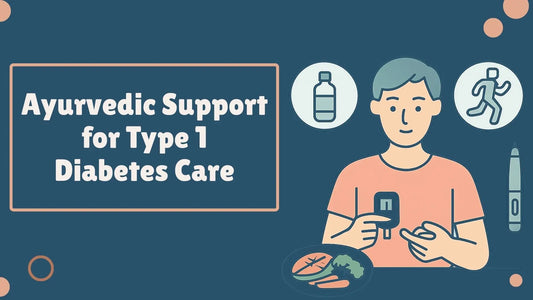
Top 10 Exercises for Diabetes to Control Blood Sugar
Exercise is the most recommended therapy for people with diabetes, whether it's prediabetes, Type 1, or Type 2. Along with a healthy lifestyle, it can prevent, delay, or even reverse your diabetes symptoms.
Research also shows that high-intensity interval training (HIIT) and breaking up long periods of sitting with brief bursts of movement can lower blood glucose levels.
Are you also wondering about starting exercise for diabetes? Here are some excellent options to help you get moving in the right direction.
Quick Overview:
- Brisk Walking
- Cycling
- Swimming
- Yoga
- Tai Chi
- Strength Training (light weights or resistance bands)
- Aerobic Dance (like Zumba)
- Stair Climbing
- Pilates
- Chair Exercises (for limited mobility)
Top 10 Exercises for Diabetes Patients
The following exercises are highly recommended for people living with diabetes to help manage blood sugar, improve fitness, and boost overall health:
1. Brisk Walking
Walking is the easiest exercise ever. You can even start today without any equipment or gym membership.
With just a good pair of shoes and a suitable walking space, brisk walking for 30 minutes daily can help reduce blood sugar, manage blood pressure, and maintain a healthy Body Mass Index (BMI).
2. Cycling
We used to cycle in our childhood — it helped us stay fit. That’s exactly how cycling can now help manage your weight and blood glucose levels.
This gentle, low-impact exercise is also beneficial for arthritis, improves circulation, and enhances lung health — all without putting stress on your joints.
3. Swimming
This low-impact aquatic exercise works your entire body without straining your joints or muscles.
Swimming exercises like pool jogging or walking improve insulin sensitivity and control blood sugar. It also enhances circulation and heart health.
4. Yoga
Yoga has been practiced for centuries, often for relaxation and mindfulness. But research also shows it helps manage diabetes.
Try poses like:
- Surya Namaskar (Sun Salutation)
- Dhanurasana (Bow Pose)
- Bhujangasana (Cobra Pose)
- Viparita Karani (Legs-Up-the-Wall Pose)
These postures help regulate blood sugar, reduce stress hormones, lower blood pressure, and support weight control. Yoga also improves posture and flexibility.
5. Tai Chi
Tai Chi is an ancient Chinese practice that combines slow, flowing movements with deep breathing and meditation — often called “meditation in motion.”
It improves balance, flexibility, and circulation. Tai Chi also reduces stress, which positively affects blood sugar levels. It’s especially helpful for older adults or beginners.
6. Strength Training
Strength training helps build lean muscle, which makes insulin work more efficiently.
Using light weights, resistance bands, or your own body weight (squats, lunges, push-ups) can help lower blood sugar, support weight loss, and strengthen bones. Aim for 2–3 sessions per week, with rest in between.
7. Aerobic Dance (Like Zumba)
If you enjoy music and fun workouts, aerobic dance like Zumba is perfect for you. It boosts heart rate, burns calories, and lifts your mood.
Aerobic dance supports cardiovascular health, weight control, and better blood sugar regulation — all while being fun and social.
8. Stair Climbing
Taking stairs instead of the elevator is a simple and effective way to stay active.
Stair climbing strengthens your legs, boosts heart health, and burns more calories than walking on flat ground. It’s also great for breaking up long periods of sitting.
9. Pilates
Pilates is a low-impact exercise focusing on core strength, flexibility, and controlled breathing.
It improves posture, balance, and muscle tone. For people with diabetes, it can reduce stress and support better body control. It’s beginner-friendly and suitable for limited mobility too.
10. Chair Exercises (For Limited Mobility)
If you struggle with joint pain or standing for long, chair exercises are a safe and effective alternative.
Moves like seated leg lifts, arm circles, and resistance band stretches can improve blood flow, maintain joint health, and strengthen muscles — all without straining your body.
Final Thoughts
Being physically active is one of the best things you can do for diabetes management. Start slow, choose exercises you enjoy, and aim to move a bit more each day.
Whether it’s walking, swimming, dancing, or yoga — every movement counts toward better blood sugar control, a healthier heart, and a happier you.
References
- Chao, M., Wang, C., Dong, X., & Ding, M. (2018). The effects of Tai Chi on type 2 diabetes mellitus: A meta-analysis. Journal of Diabetes Research. First published: July 5, 2018. Academic Editor: Eusebio Chiefari. Retrieved from: https://doi.org/10.1155/2018/7350567
- Chipkin, S. R., Klugh, S. A., & Chasan-Taber, L. (2001). Exercise and diabetes. Cardiology Clinics, 19(3), 489–505. ISSN: 0733-8651. Retrieved from: https://doi.org/10.1016/S0733-8651(05)70231-9
- Yang, Q., Wang, W. W., Ma, P., Ma, Z. X., Hao, M., Adelusi, T. I., Lei-Du, Yin, X. X., & Lu, Q. (2017). Swimming training alleviated insulin resistance through Wnt3a/β-catenin signaling in type 2 diabetic rats. Iranian Journal of Basic Medical Sciences, 20(11), 1220–1226. Retrieved from: https://pubmed.ncbi.nlm.nih.gov/29299199/

Dr. Pooja Verma
Dr. Pooja Verma is a sincere General Ayurvedic Physician who holds a BAMS degree with an interest in healing people holistically. She makes tailor-made treatment plans for a patient based on the blend of Ayurveda and modern science. She specializes in the treatment of diabetes, joint pains, arthritis, piles, and age-related mobility issues.



